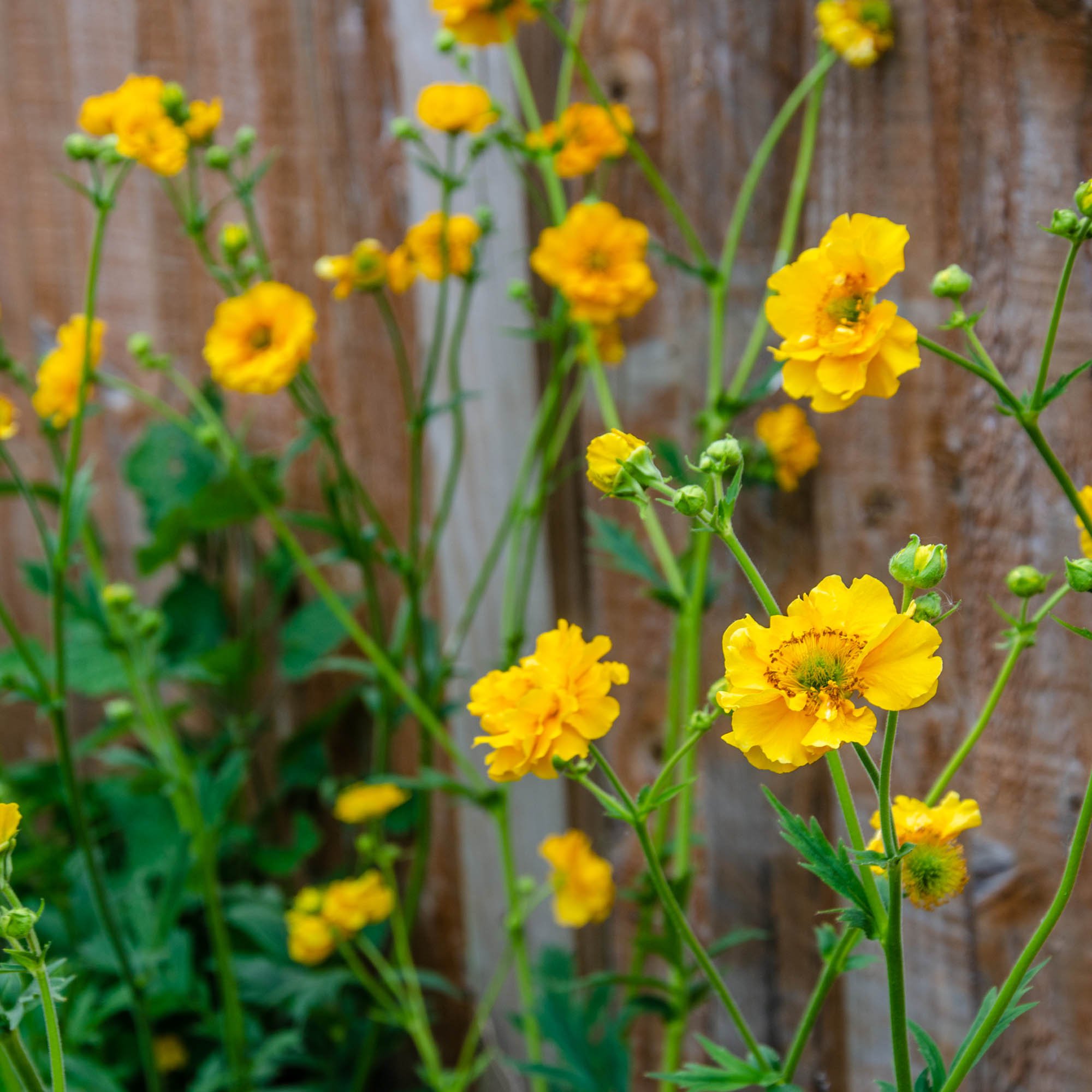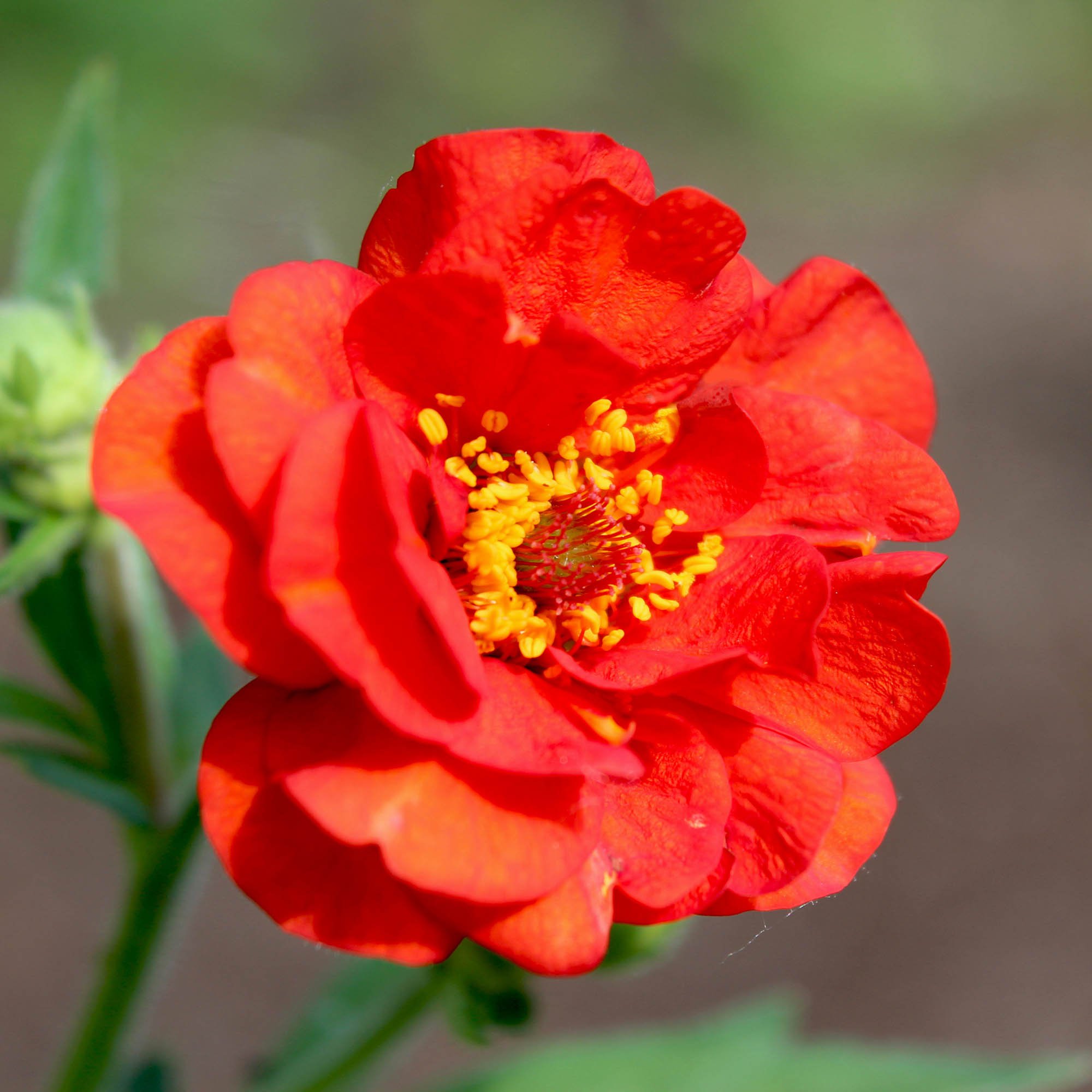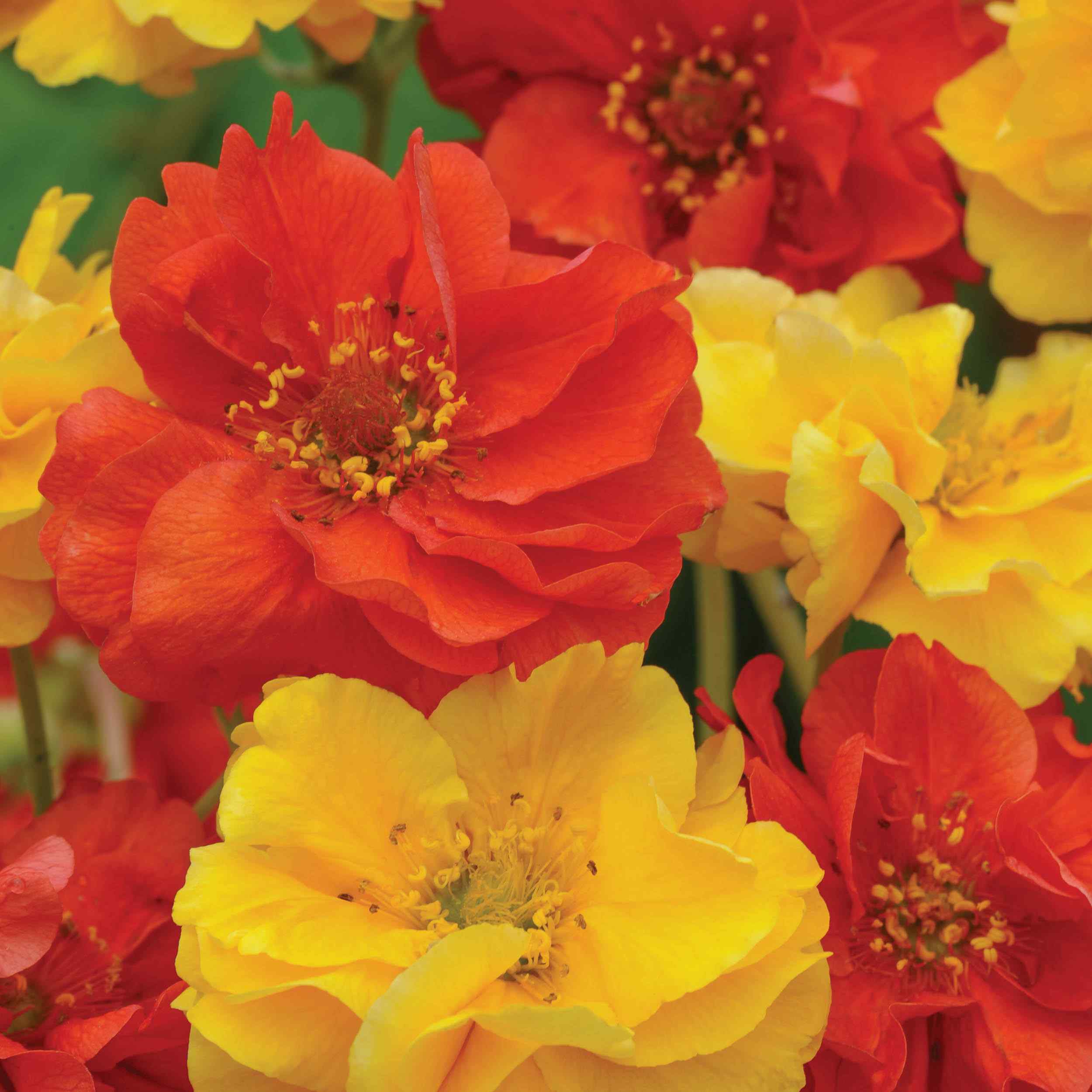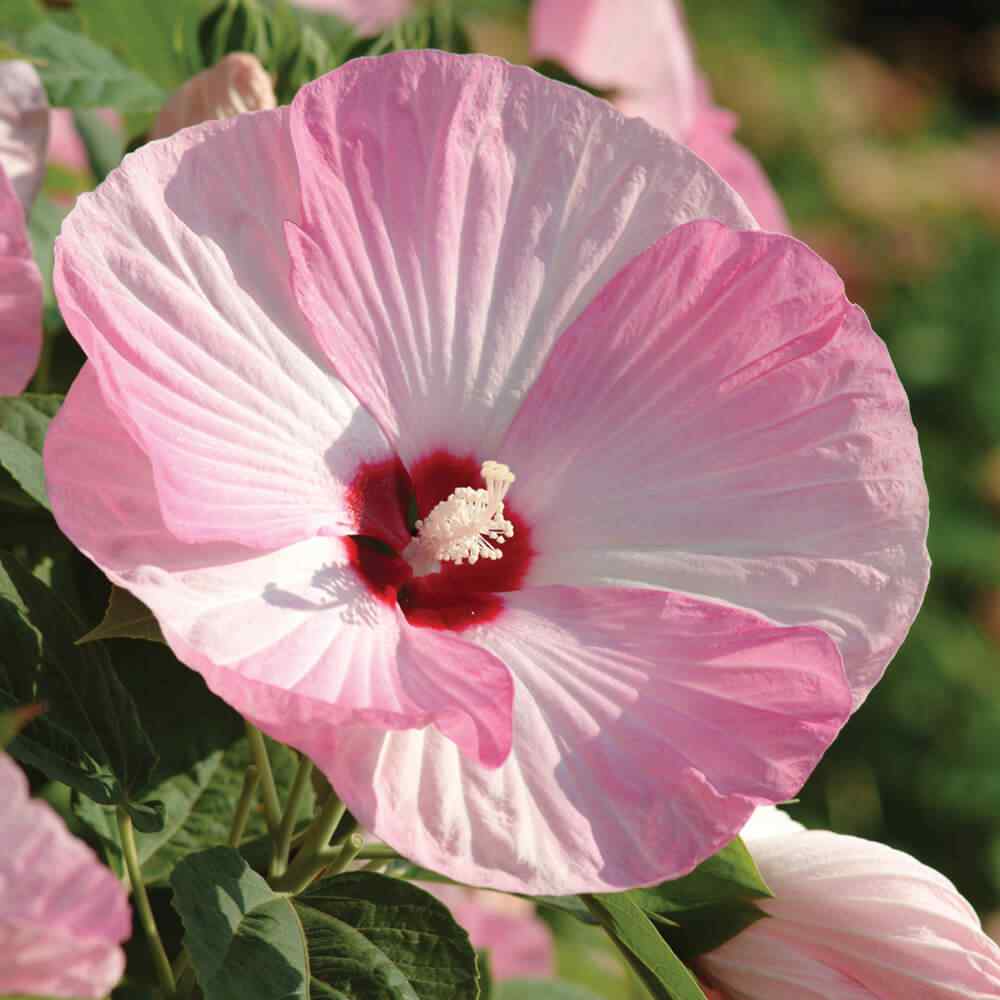
Geum Planting and Care Guide
Quick Facts About Geum
Geum is a hardy flowering perennial that features semi-evergreen foliage. It has strong stems which make it ideal for harvesting as a cut flower, but it also looks excellent out in the landscape.
Planting Time
Geum seeds benefit from a cold stratification treatment for germination. As such, they should be planted outdoors in the late fall, or treated seeds can be sown indoors in the spring 8-10 weeks before frost season ends.

Planting Location
Geum should be planted in an area of full sun or partial shade in soil that is fertile, moist, and well-drained.
How to Grow Geum
- Geum seeds benefit from a cold stratification treatment before planting. This can be done naturally by sowing the seeds outdoors in the late fall, allowing winter weather to prepare the seeds by spring. Or, you can mix the seeds in sand inside a plastic bag, placing it in the fridge for 3-4 weeks before sowing.
- To start indoors, use trays or small pots filled with a seed starter mix. Surface sow treated seeds at a rate of 2-3 per plant, and lightly cover with soil.
- If sowing directly outdoors, first prepare a seedbed by breaking up soil and removing weeds.
- Treated seeds should be kept moist until germination, maintaining an ideal temperature of 65-70F degrees. Under proper conditions, these seeds should germinate in 3-4 weeks (Geum Sunbeam may only take 2-3 weeks).
- Once indoor seedlings have their first few sets of true leaves, they can be transplanted outdoors after all frost danger has passed.
- Before transplanting seedlings into the garden, it's essential to "harden them off". This involves acclimating young plants to outdoor conditions by placing them in a sheltered outdoor area for about a week. Initially, shield them from strong winds and direct sunlight. If there's a risk of frost overnight, either cover the plants or bring them indoors, then return them outside in the morning. This hardening off method helps strengthen the plant's cell structure, minimizing transplant shock and sun damage.

Care And Maintenance
- Keep weeds under control during the growing season. Weeds compete with plants for water, space and nutrients, so control them by either cultivating often or use a mulch to prevent their seeds from germinating.
- Mulches play a vital role in preserving soil moisture and ensuring consistent soil temperatures. When it comes to annuals, using organic mulch made from shredded leaves not only enhances the appearance of the bed but also enriches the soil as it decomposes over time. Remember to keep mulch away from the plant stems to avoid potential rot issues.
- Geum should be watered regularly, especially during dry spells. If the plant begins to wilt even with moist soil, it should be moved to partial shade.
- Geum benefits from a light application of balanced, slow-release fertilizer in the spring.
- Geum should be tidied in the spring, removing any leftover seedheads and dead foliage. Spent blooms can also be deadheaded to encourage further flowering. It can also be cut down to ground level during late fall.




































